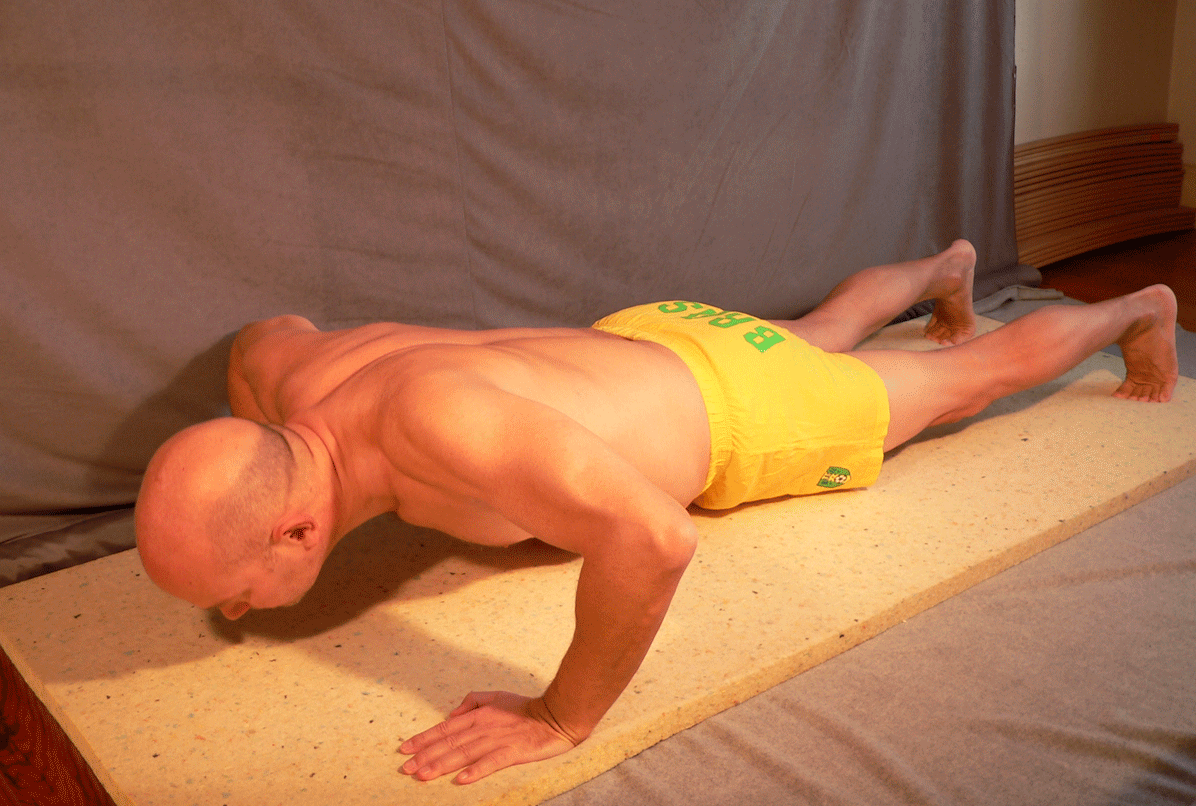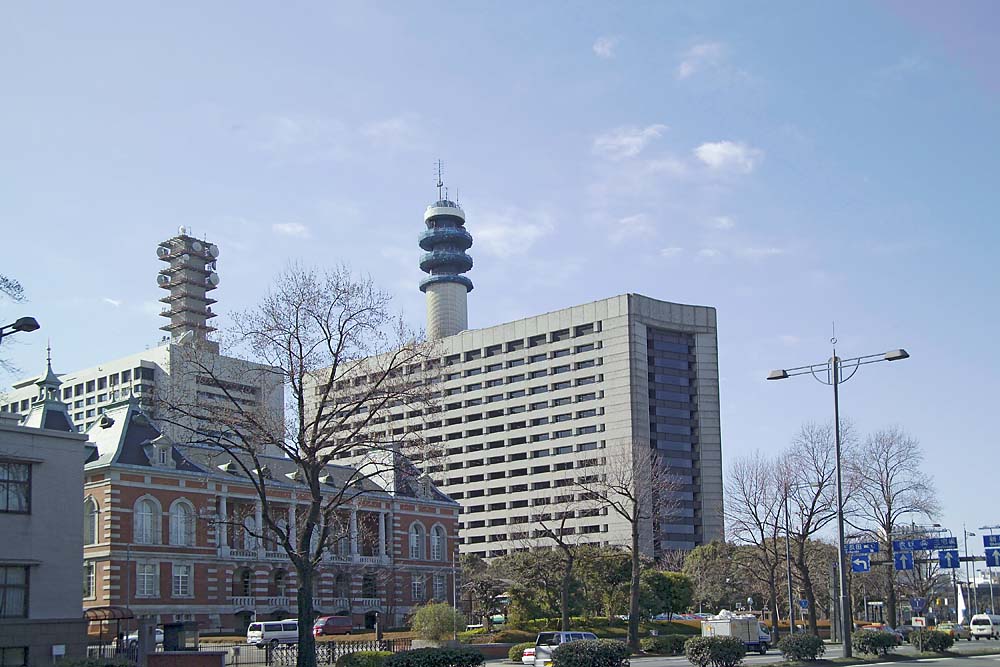|
Angry White Pyjamas
''Angry White Pyjamas'' is a book written by Robert Twigger about his time in a one-year intensive program of studying Yoshinkan aikido. Summary The book is set in Tokyo in the mid-1990s. Twigger is living with two friends in a tiny apartment near central Tokyo. They all decide to enrol at the Yoshinkan Hombu Dojo in order to get fit and break out of their sedentary life-style. Soon after beginning regular training, Twigger decides that the only way to truly experience aikido is to do the Yoshinkan Senshusei course, a gruelling 11-month program to train up instructors of Yoshinkan aikido. The course consists of four hours of training, five days a week, in addition to dojo-cleaning duties, special training weekends and demonstrations. Twigger spends most of his time describing the rigor and sometimes agony of the very intensive course. He refers to doing kneeling techniques, or suwari-waza, until his knees bled, only to practice the next day and in so doing tear open the sca ... [...More Info...] [...Related Items...] OR: [Wikipedia] [Google] [Baidu] |
Robert Twigger
Robert Twigger (born 30 October 1962) is a British artist and writer. He travels widely but divides his time mostly between the UK and Egypt. Life Twigger was educated at Balliol College, Oxford University. He initially studied engineering, but after six weeks switched to politics and philosophy. He won the Newdigate Prize for poetry. He also staged a film festival for student films, as well as directing two films himself. Following university, he worked in the publicity department of a record company and taught English and studied martial arts in Japan for three years. After that he travelled widely in remote places for a number of years. He stood in the 2001 general election in the Oxford West and Abingdon constituency, receiving 93 votes. Twigger has written fiction and non-fiction books, as well as articles for newspapers and magazines including ''The Daily Telegraph'', ''The Sunday Times'', ''Lonely Planet'' magazine, ''Maxim'', the ''Financial Times'' and '' Esquire'' ... [...More Info...] [...Related Items...] OR: [Wikipedia] [Google] [Baidu] |
Senshusei Course
Retrieved on August 27, 2010. is an intensive, 11-month training program conducted at Aikido's '' honbu '' (headquarters and main training hall) in , Tokyo, Japan. [...More Info...] [...Related Items...] OR: [Wikipedia] [Google] [Baidu] |
Yoshinkan
Yoshinkan (養神館 ''Yōshinkan'' lit. "Hall of Spirit Cultivation") Aikido is a style of aikido that developed after World War II in the Yoshinkan Dojo of Gozo Shioda (1915–1994). Yoshinkan Aikido is often called the "hard" style of aikido because the training methods are a product of Shioda's grueling life before the war. Shioda named his dojo "Yoshinkan" after a dojo of the same name that was built by his father, a physician, who wanted to improve both physical and spiritual health. The Yoshinkan style is currently the second largest aikido organization worldwide. Style As a style of aikido, Yoshinkan is more akin to the pre-war ''aikibudo'' techniques taught by Morihei Ueshiba, and therefore also generally closer to aikijujutsu than those styles of aikido developed after the war. The unusual emphasis placed on correct form prior to practicing correct flow and timing further contributes to its image as a "hard" style. Gozo Shioda created a structured method in which beg ... [...More Info...] [...Related Items...] OR: [Wikipedia] [Google] [Baidu] |
Tokyo
Tokyo (; ja, 東京, , ), officially the Tokyo Metropolis ( ja, 東京都, label=none, ), is the capital and largest city of Japan. Formerly known as Edo, its metropolitan area () is the most populous in the world, with an estimated 37.468 million residents ; the city proper has a population of 13.99 million people. Located at the head of Tokyo Bay, the prefecture forms part of the Kantō region on the central coast of Honshu, Japan's largest island. Tokyo serves as Japan's economic center and is the seat of both the Japanese government and the Emperor of Japan. Originally a fishing village named Edo, the city became politically prominent in 1603, when it became the seat of the Tokugawa shogunate. By the mid-18th century, Edo was one of the most populous cities in the world with a population of over one million people. Following the Meiji Restoration of 1868, the imperial capital in Kyoto was moved to Edo, which was renamed "Tokyo" (). Tokyo was devastate ... [...More Info...] [...Related Items...] OR: [Wikipedia] [Google] [Baidu] |
Shinjuku
is a special ward in Tokyo, Japan. It is a major commercial and administrative centre, housing the northern half of the busiest railway station in the world (Shinjuku Station) and the Tokyo Metropolitan Government Building, the administration centre for the Tokyo Metropolitan Government, government of Tokyo. As of 2018, the ward has an estimated population of 346,235, and a population density of 18,232 people per km2. The total area is 18.23 km2. Since the end of the Second World War, Shinjuku has been a major secondary center of Tokyo (Tokyo Metro Fukutoshin Line#History, ''fukutoshin''), rivaling to the original city center in Marunouchi and Ginza. It literally means "New Inn Ward". Shinjuku is also commonly used to refer to the entire area surrounding Shinjuku Station. The southern half of this area and of the station in fact belong to Yoyogi and Sendagaya districts of the neighboring Shibuya, Tokyo, Shibuya ward. Geography Shinjuku is surrounded by Chiyoda, Tokyo, ... [...More Info...] [...Related Items...] OR: [Wikipedia] [Google] [Baidu] |
Push-up
The push-up (sometimes called a press-up in British English) is a common calisthenics exercise beginning from the prone position. By raising and lowering the body using the arms, push-ups exercise the pectoral muscles, triceps, and anterior deltoids, with ancillary benefits to the rest of the deltoids, serratus anterior, coracobrachialis and the midsection as a whole. Push-ups are a basic exercise used in civilian athletic training or physical education and commonly in military physical training. They are also a common form of punishment used in the military, school sport, and some martial arts disciplines. Etymology The American English term ''push-up'' was first used between 1905 and 1910, while the British ''press-up'' was first recorded between 1945 and 1950. Body mass supported during push-ups According to the study published in Journal of Strength and Conditioning Research, the test subjects supported with their hands, on average, 69.16% of their body mass in the ... [...More Info...] [...Related Items...] OR: [Wikipedia] [Google] [Baidu] |
Sit-up (exercise)
The sit-up (or curl-up) is an abdominal endurance training exercise to strengthen, tighten and tone the abdominal muscles. It is similar to a crunch (crunches target the rectus abdominis and also work the external and internal obliques), but sit-ups have a fuller range of motion and condition additional muscles. Form It begins with lying with the back on the floor, typically with the arms across the chest or hands behind the head and the knees and toes bent in an attempt to reduce stress on the back muscles and spine, and then elevating both the upper and lower vertebrae from the floor until everything superior to the buttocks is not touching the ground. Some argue that situps can be dangerous due to high compressive lumbar load and may be replaced with the crunch in exercise programs. Performing alternative abdominal exercises to sit-ups actually increases the ability to do sit-ups. Performing sit-ups do not cause the spot reduction of fat at the waist. Gaining a " six pack" ... [...More Info...] [...Related Items...] OR: [Wikipedia] [Google] [Baidu] |
Tsutomu Chida
was previously one of the highest ranking ''shihan'' of Yoshinkan aikido, at 8th dan, and dojocho of its hombu dojo from 2002. He first became a part of Yoshinkan in 1969 but split from the organization in January 2008 following the resignation of ''kanchou'' Kyoichi Inoue. Chida was an uchideshi of Yoshinkan founder Gozo Shioda for 23 years—the longest term among Shioda's uchideshi-- and directed the senshusei course Retrieved on August 27, 2010. is an intensive, 11-month . He is "a living legend of Yoshinkan aikido" and current "highest shihan" (最高師範) of his Yoshinkan offshoot school, Aikido Renshinkai (合気道錬身会). References [...More Info...] [...Related Items...] OR: [Wikipedia] [Google] [Baidu] |
Gozo Shioda
was a Japanese master of aikido who founded the Yoshinkan style of aikido.Aikido Yoshinkan: About Gozo Shioda (Yoshinkan Founder) (c. 2009). Retrieved on February 27, 2010. Anonymous (1964): "Yoshinkai Aikido Institute." ''Black Belt'', 2(4):52–55. He was one of aikido founder 's most senior students.Adams, A. (1974): "Status report: The 'other' Aikido." ''Black Belt'', 12(2):34–37.Zernow, D., & Hadden, J. (1982): "Aikido Yoshinkai: Power and harmony." ''Black Belt'', 20(11):56–60, 84–87.Makiyama ... [...More Info...] [...Related Items...] OR: [Wikipedia] [Google] [Baidu] |
Robert Mustard
Robert Mustard (May 19, 1956 in Toronto, Canada) is a teacher of Yoshinkan Aikido. He is currently ranked 8th Dan, Shihan. Early life Born in Toronto on May 19, 1956. Robert Mustard took to sports at an early age, playing hockey and Canadian football. His introduction to martial arts came through Kung Fu instructors Jack Chin and James Lore, who trained him for five years.Interview with Robert Mustard, The Traditional Dojo magazine, Issue 1, volume 1, March 2012 He underwent kendo training under Larry Nakamura, Shigeo Kimura and Masatoshi Tagawa for five years and achieved the rank of ni-dan. Yoshinkan Aikido training In 1977, Mustard traveled to the United States to participate in a kendo demonstration at a martial art convention, and saw a demonstration by Takashi Kushida, which galvanized his interest to train in an aikido dojo. He was introduced to Yoshinkan Aikido at college where he joined a club led by Takeshi Kimeda, and would train under him for over a decade. For a time ... [...More Info...] [...Related Items...] OR: [Wikipedia] [Google] [Baidu] |
Yamato-damashii
or is a Japanese language term for the cultural values and characteristics of the Japanese people. The phrase was coined in the Heian period to describe the indigenous Japanese 'spirit' or cultural values as opposed to cultural values of foreign nations such as those identified through contact with Tang dynasty China. Later, a qualitative contrast between Japanese and Chinese spirit was elicited from the term. Edo period writers and samurai used it to augment and support the Bushido concept of honor and valor. English translations of ''Yamato-damashii'' include the "Japanese spirit", "Japanese soul", "Yamato spirit", and "The Soul of Old Japan". Lafcadio Hearn mentions the latter in connection with Shinto. For this national type of moral character was invented the name ''Yamato-damashi'' (or ''Yamato-gokoro''), — the Soul of Yamato (or Heart of Yamato), — the appellation of the old province of Yamato, seat of the early emperors, being figuratively used for the entir ... [...More Info...] [...Related Items...] OR: [Wikipedia] [Google] [Baidu] |
English Language Education In Japan
English-language education in Japan began as early as 1600 with the initial contacts between the Japanese and Europeans. Almost all students graduating from high school in Japan have had several years of English language education; however, many still do not have fluent English conversation abilities. History The earliest record of the initial contact between the Japanese and a native English speaker took place around 1600 when it is believed that Tokugawa Ieyasu, founder of the Tokugawa Feudal Government, met with Englishman William Adams. Although it is reported that the only interpreter between the two men was only well-versed in the Portuguese language, it did not stop Tokugawa Ieyasu from having a very positive relation with William Adams who remained in Japan for the remainder of his life. However, after the death of Tokugawa Ieyasu in 1616, a change in the foreign policy of the Bakufu ordered the closing of the English merchants' office in 1623, which consequently pro ... [...More Info...] [...Related Items...] OR: [Wikipedia] [Google] [Baidu] |







